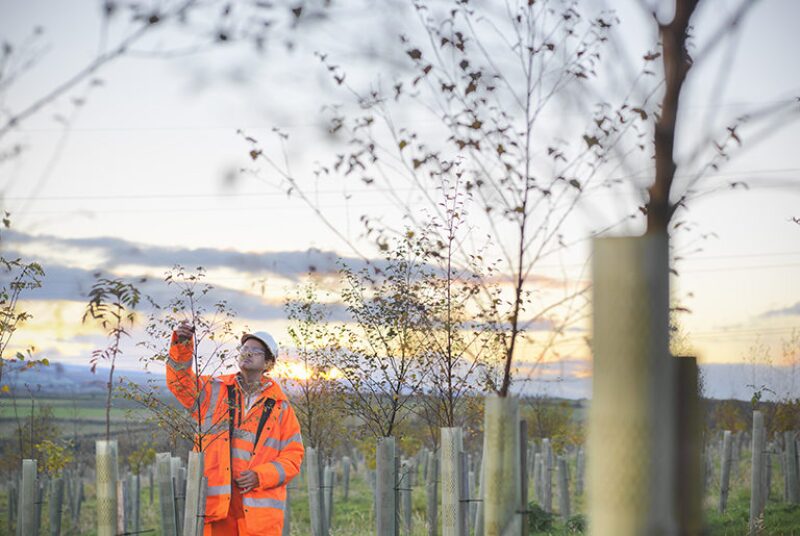In September 2015, the United Nations adopted 17 Sustainable Development Goals, addressing the global challenges facing humanity, including poverty, inequality, health, education, energy, climate, the environment, and prosperity. The organization’s 2030 Agenda for Sustainable Development is a continuation of its Eight Millennium Development Goals, with, among notable additions, the inclusion of energy access as a separate goal.
Energy is central to many of these goals through its linkage to the economy, education, health, the environment, and water. In 2019, nearly a billion people (more than 13% of the world population) do not have access to electricity, and 3 billion people lack access to clean cooking solutions, even within oil and gas producing/exporting countries.
Sustainable Development Goal no. 7 sets five ambitious objectives to be reached by 2030, including universal access to affordable, reliable, and modern energy services; a significant increase in the share of renewable energy in the global energy mix; and a doubling of the global rate of improvement in energy efficiency. Despite its importance in world energy supply, and its lower environmental footprint compared with coal, the oil and gas industry suffers from a poor public image, especially with the younger generation. Given the 2018 Intergovernmental Panel on Climate Change report that raised alarm bells about the consequences of just a small change in average global temperatures, how can the industry support the ambitious agenda of the UN’s sustainability goals?
Several organizations—including energy agencies, major oil and gas companies, and research and consulting groups—have developed energy supply and demand outlooks based on various scenarios. These outlooks (not forecasts) show the potential evolution of energy demand in the future (generally 2040/2050/2060), and the corresponding energy mix.
In these models, energy demand grows between 3% and 44% from now until 2040, while the share of oil and gas in the energy mix varies between 53% today and between 50-58% in 2040. Therefore, oil and, more importantly, natural gas will be important sources in meeting the world’s increasing energy demand going forward. Most of the outlooks, however, do not take into account the multiple requirements associated with the UN’s sustainable development goals.
In 2017, the International Energy Agency published an energy outlook that took into account universal access to energy, a reduction of emissions in line with the so-called Paris Agreement regarding climate change, and a major improvement in air quality, which is the cause of millions of premature deaths. In this “sustainable development scenario,” which does not require a major increase in energy-related investment compared with the baseline case, it is projected that global energy demand will continue to increase and, that by 2040, the oil and gas share of the global energy mix will still be 50%, representing the major enabler for universal energy access. The major emission-reduction wedges for this energy transition are: energy efficiency, renewables, CO2 capture/utilization/storage, and switching from coal to natural gas.
The oil and gas industry has many opportunities to move public perception of it as being part of the sustainability problem to being part of the solution. The industry has been fueling major economic growth since World War II, enabling access to transportation and electricity to an increasingly larger share of the world’s population. Major international and national oil and gas companies are participating actively in an economically and socially acceptable energy transition to the future. Several initiatives are under way, including:
- The majors’ shift to natural gas and its role as a major bridge to a low-carbon future. Technological developments such as LNG, floating storage and regasification units, and floating LNG are contributing to larger access at the country level to natural gas. Additionally, renewables such as solar and wind, which have seen major cost decreases over the past decade and are competing with fossil fuels for power generation, suffer from their intermittency and need to be combined with cost‑effective energy storage solutions and/or a baseload energy supply such as natural gas.
- The Oil and Gas Climate Initiative, with a $1 billion fund over 10 years to take practical action on climate change and reduce the carbon footprint of energy value chains. The initiative was started by 10 IOCs and NOCs, and has been recently joined by three North American IOCs. Among its initiatives are to monitor and reduce methane leakage and the development of carbon capture and storage projects.
- The Clean Energy Ministerial and Mission Innovation initiatives, which involves public and private organizations (including oil companies) making progress on a range of issues, including sustainability themes as diverse as gender diversity in the energy sector, energy efficiency, and clean hydrogen.
- The Greenhouse Gas Flaring Reduction Partnership, a public‑private initiative, led by the World Bank, to address the issue of gas flaring, which wastes resources and creates an environmental problem. The partnership disseminates best practices and helps develop country-specific gas flaring reduction programs.
- Carbon capture, utilization, and storage as a single technology, which has the potential to be the largest decarbonization component in the energy transition. Its application expands beyond capture from natural gas to include power plants as well as industry (steel, cement, aluminum, petrochemicals). Having been a pioneer in carbon capture, and through its subsurface-related technologies, the oil industry can play a major role in making this technology meet the most stringent regulatory requirements.
- Energy efficiency and clean energy in the development and production of hydrocarbons and in the downstream sectors. Technological advances associated with technologies such as digitalization are helping the industry improve its efficiency. Collaboration through industry organizations such as IPIECA and IOGP are providing participants the opportunity to benchmark their operational performance. In the refining sector (the most energy-intensive activity of the oil industry), voluntary use of benchmarks such as the Solomon Energy Intensity Index has helped participants improve performance. Novel conversion routes such as crude-to-chemicals provide further potential for efficiency. Other innovation in the upstream sector is the increased use of renewables as an energy source for enhanced recovery (e.g., solar for steam generation).
- Development of renewables and energy storage solutions. Oil companies are investing in novel third-generation biofuels such as algae. They also are providing expertise for offshore wind projects based on experience developing platforms. Reduction in the cost of energy storage and its improved reliability has also been featured in company strategies.
- Several IOCs have created technology venture arms to invest in startups associated with the energy transition.
Another sustainability requirement for oil and gas companies is a closer association with the development of local populations. The industry has engaged in many aspects of corporate and social responsibility and transparency in this area, and most IOCs and NOCs include a corporate responsibility review in their annual reports.
SPE and its members’ role in the sustainability process is highlighted in the new SPE Strategic Plan: “Advance the oil and gas community’s ability to meet the world’s energy demand in a safe, environmentally responsible, and sustainable manner” and by the strategic priority regarding professional pride: “SPE members understand and are inspired by our industry’s contribution to society and represent the industry positively to the public.”
SPE has actively pursued this agenda. In 2018, a memorandum of understanding was signed by SPE, the International Association of Oil and Gas Producers (IOGP), and the International Petroleum Industry Environmental Conservation Association (IPIECA) to promote social responsibility and sustainability. SPE’s Sustainable Development Technical Section has more than 1,500 members and has been involved with an extensive program of conferences, workshops, and webinars. In addition, 2019 SPE President Sami Alnuaim has made sustainability a key theme of his term in office.
When faced with a skeptical audience, SPE members should inform themselves through the Society’s events and knowledge resources about the industry’s sustainability activities, and also investigate the resources listed below.
For Further Reading
United Nations (2015): The Sustainable Development Goals.
Newell, R (2018).: “8th IEA-IEF-OPEC Outlook Symposium Comparative Analysis Findings.”
International Energy Agency (2017): The World Energy Outlook, OECD/IEA.
Alnuaim, S. (2019): “Oil and Gas Sustainability,” presentation at the University of Houston, January 2019.
IPIECA-UNDP-UNFCC (2017): “Sustainable Development Goals Atlas.”


